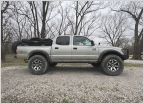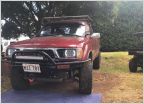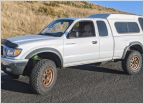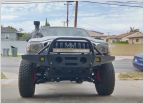-
Welcome to Tacoma World!
You are currently viewing as a guest! To get full-access, you need to register for a FREE account.
As a registered member, you’ll be able to:- Participate in all Tacoma discussion topics
- Communicate privately with other Tacoma owners from around the world
- Post your own photos in our Members Gallery
- Access all special features of the site
AdventureTaco - turbodb's build and adventures
Discussion in '1st Gen. Builds (1995-2004)' started by turbodb, Apr 4, 2017.
Page 194 of 281
Page 194 of 281


 MortalLove's '02 Build
MortalLove's '02 Build JTFisherman's 2004 DC
JTFisherman's 2004 DC MAUIAUSTIN's High School Tacoma Build "Ava"
MAUIAUSTIN's High School Tacoma Build "Ava" ShapeShifter Builds Bumble
ShapeShifter Builds Bumble Daily Driver Build
Daily Driver Build The Supracharged King Ranch Bundle of Merriment Build
The Supracharged King Ranch Bundle of Merriment Build






































